
Gerónimo was a military leader and medicine man from the Bedonkohe band of the Ndendahe Apache people. From 1850 to 1886, Geronimo joined with members of three other Central Apache bands – the Tchihende, the Tsokanende and the Nednhi – to carry out numerous raids, as well as fight against Mexican and U.S. military campaigns in the northern Mexico states of Chihuahua and Sonora and in the southwestern American territories of New Mexico and Arizona.
The Apache are several Southern Athabaskan language–speaking peoples of the Southwest, the Southern Plains and Northern Mexico. They are linguistically related to the Navajo. They migrated from the Athabascan homelands in the north into the Southwest between 1000 and 1500 CE.

Jicarilla Apache, one of several loosely organized autonomous bands of the Eastern Apache, refers to the members of the Jicarilla Apache Nation currently living in New Mexico and speaking a Southern Athabaskan language. The term jicarilla comes from Mexican Spanish meaning "little basket", referring to the small sealed baskets they used as drinking vessels. To neighboring Apache bands, such as the Mescalero and Lipan, they were known as Kinya-Inde.
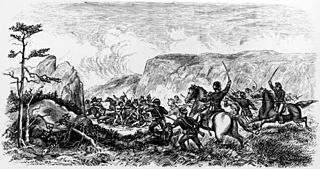
The Battle of Ash Hollow, also known as the Battle of Blue Water Creek or the Harney Massacre, was an engagement of the First Sioux War, fought on September 2 and 3, 1855, between United States Army soldiers under Brig. Gen. William S. Harney and a band of the Brulé Lakota along the Platte River in present-day Garden County, Nebraska. In the 20th century, the town of Lewellen, Nebraska, was developed here as a railroad stop.

The Apache Wars were a series of armed conflicts between the United States Army and various Apache tribal confederations fought in the southwest between 1849 and 1886, though minor hostilities continued until as late as 1924. After the Mexican–American War in 1846, the United States annexed conflicted territory from Mexico which was the home of both settlers and Apache tribes. Conflicts continued as American settlers came into traditional Apache lands to raise livestock and crops and to mine minerals.
The "Army on the Frontier" is a term applied to the activities of the United States Army stationed near the frontier settlements from the beginning of national existence until about 1890, the end of the settlers' frontier.

The Apache Scouts were part of the United States Army Indian Scouts. Most of their service was during the Apache Wars, between 1849 and 1886, though the last scout retired in 1947. The Apache scouts were the eyes and ears of the United States military and sometimes the cultural translators for the various Apache bands and the Americans. Apache scouts also served in the Navajo War, the Yavapai War, the Mexican Border War and they saw stateside duty during World War II. There has been a great deal written about Apache scouts, both as part of United States Army reports from the field and more colorful accounts written after the events by non-Apaches in newspapers and books. Men such as Al Sieber and Tom Horn were sometimes the commanding officers of small groups of Apache Scouts. As was the custom in the United States military, scouts were generally enlisted with Anglo nicknames or single names. Many Apache Scouts received citations for bravery.
Thomas Boyne was a Buffalo Soldier in the United States Army and a recipient of America's highest military decoration—the Medal of Honor—for his actions in the Indian Wars of the western United States.

The Battle of Cieneguilla was an engagement of the Jicarilla War involving a group of Jicarilla Apaches, possibly their Ute allies, and the American 1st Cavalry Regiment on March 30, 1854 near what is now Pilar, New Mexico. The Santa Fe Weekly Gazette reported that the action "was one of the severest battles that ever took place between American troops and Red Indians." It was one of the first significant battles between American and Apache forces and was also part of the Ute Wars, in which Ute warriors attempted to resist Westward expansion in the Four Corners region.
Cantonment Burgwin was a U.S. Army fort in the southwestern United States, located ten miles (16 km) south of Taos, New Mexico, southeast of Ranchos de Taos.
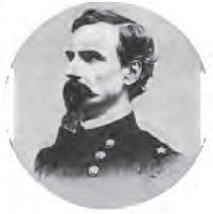
John Wynn Davidson was a brigadier general in the United States Army during the American Civil War and an American Indian fighter. In 1850, he co-led the Bloody Island massacre of 60-200 Pomo old men, women, and children as part of the wider California genocide.
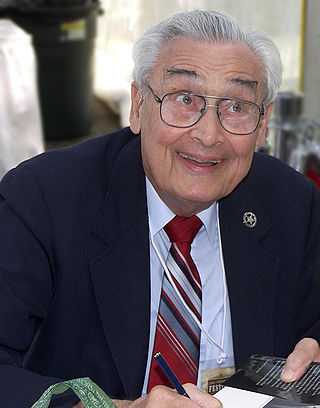
Robert Marshall Utley was an American author and historian who wrote sixteen books on the history of the American West. He was a chief historian for the National Park Service.

Thomas Turner Fauntleroy was a Virginia lawyer, state legislator from Fauquier, Regular Army officer, slaver, and briefly a Virginia military officer at the beginning of the American Civil War who refused a commission as brigadier general in the Confederate States Army.

The Bonneville Expedition was a military operation launched by the United States Army in 1857 at the beginning of the Chiricahua Apache Wars. Colonel Benjamin Bonneville, Lieutenant Colonel Dixon S. Miles, and Colonel William W. Loring commanded parties which headed west from Fort Fillmore, New Mexico Territory. The expedition quickly engaged Apaches in two small but significant battles, the first in the Black Range and the second along the Gila River near present-day Safford, Arizona.
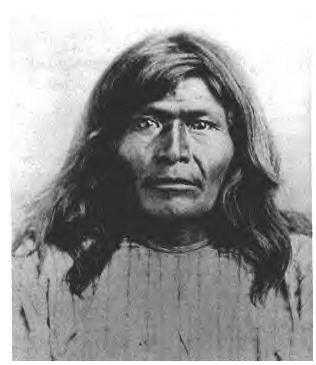
Victorio's War, or the Victorio Campaign, was an armed conflict between the Apache followers of Chief Victorio, the United States, and Mexico beginning in September 1879. Faced with arrest and forcible relocation from his homeland in New Mexico to San Carlos Indian Reservation in southeastern Arizona, Victorio led a guerrilla war across southern New Mexico, west Texas and northern Mexico. Victorio fought many battles and skirmishes with the United States Army and raided several settlements until the Mexican Army killed him and most of his warriors in October 1880 in the Battle of Tres Castillos. After Victorio's death, his lieutenant Nana led a raid in 1881.
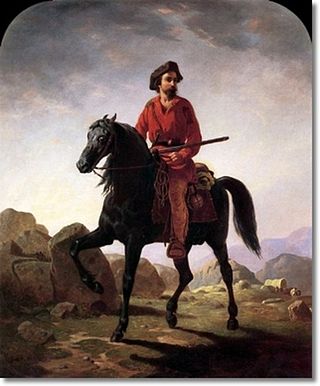
The Jicarilla War began in 1849 and was fought between the Jicarilla Apaches and the United States Army in the New Mexico Territory. Ute warriors also played a significant role in the conflict as they were allied with the Jicarillas. The war started when the Apaches and Utes began raiding against settlers on the Santa Fe Trail. Eventually, in 1853, the U.S. Army retaliated which resulted in a series of battles and campaigns that ended in 1854 when a large military expedition managed to quell most of the violence. However, some minor skirmishing continued into 1855.

Clay Beauford was an American army officer, scout and frontiersman. An ex-Confederate soldier in his youth, he later enlisted in the U.S. Army and served with the 5th U.S. Cavalry during the Indian Wars against the Plains Indians from 1869 to 1873. He acted as a guide for Lieutenant Colonel George Crook in his "winter campaign" against the Apaches and received the Medal of Honor for his conduct.
The Fort Pueblo massacre was an attack that occurred on December 25, 1854, against Fort Pueblo, Colorado, also known as El Pueblo, a settlement on the north side of the Arkansas River, 1⁄2 mile west of the mouth of Fountain Creek, above the mouth of the Huerfano. The attack followed the deaths of Chief Chico Velasquez and others who died of smallpox after having been given blanket coats which the Muache believed had been deliberately contaminated. Coalition forces of over 100 Muache Utes and Jicarilla Dindes under the leadership of Chief Tierra Blanco led the attack against Fort Pueblo, killing 15 men, and capturing one woman, and two boys. Later on, the Muache killed the woman south of Pueblo along Salt Creek. Two women and one man survived the joint military operation, and the two boys who were captured eventually returned.
Flechas Rayadas or Striped Arrows was a Jicarilla Apache chief of the band that, together with Francisco Chacon's warriors, defeated Lieutenant Davidson's detachment of 60 men from the First Regiment of Dragoons in the Battle of Cieneguilla, in the Embudo Mountains, on April 4, 1854, killing 22 and wounding 36. On April 7, as Lieutenant Colonel Cooke was pursuing the Jicarillas, General Garland sent word to Cooke that Flechas Rayadas had offered to return all the horses and arms captured in that fight if peace could be made; the chief's proposal was rejected.
Francisco Chacon was a Jicarilla Apache chief, leader in the Jicarilla uprising of 1854. He led the band that defeated the Davidson detachment of the First Regiment of Dragoons in the Battle of Cieneguilla: the Jicarilla, led by Francisco Chacon, their principal chief, and Flechas Rayadas, fought with flintlock rifles and arrows, killing 22 and a wounding another 36 of 60 dragoon soldiers, who then retreated to Ranchos de Taos lighter by 22 horses and most of the troops' supplies.












